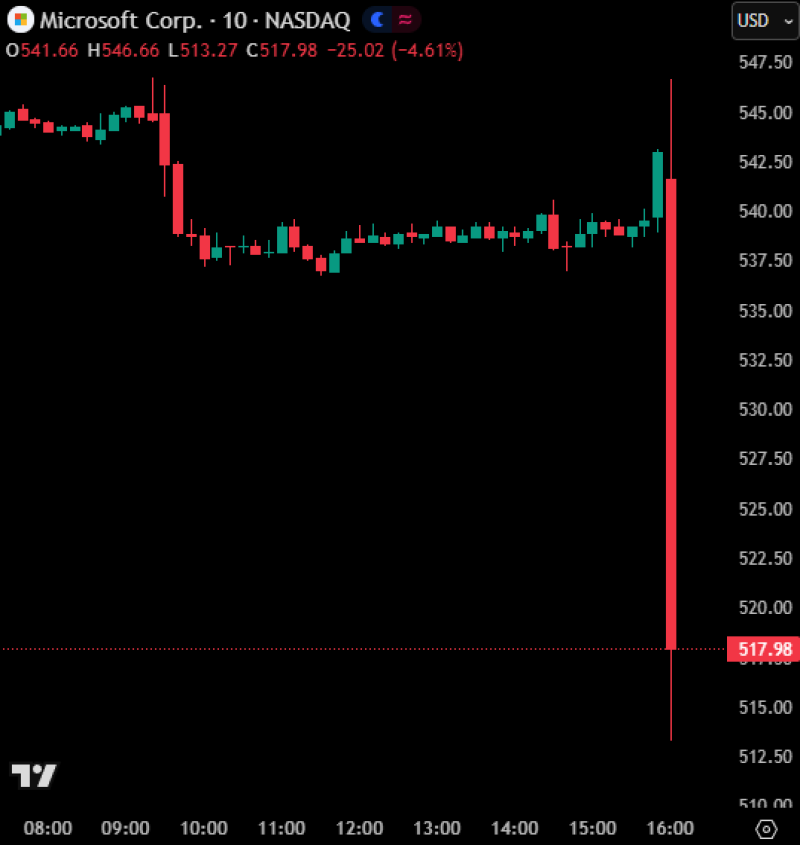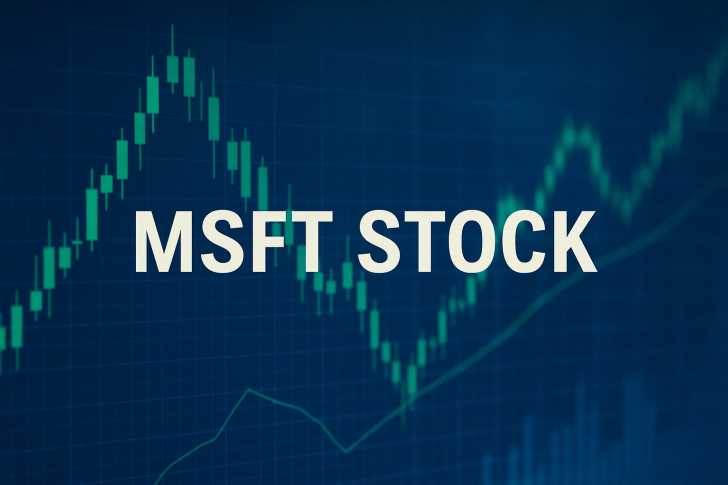In an unexpected twist, Microsoft ($MSFT) shares tumbled more than 5% even after posting solid Q3 2025 results that topped analyst estimates. The tech giant delivered $77.7 billion in quarterly revenue—comfortably above forecasts—yet the market hit the sell button hard. The accompanying 10-minute chart shows the drop happening right after earnings dropped, suggesting traders cashed out after a long run-up.
What Happened on the Chart
As The Kobeissi Letter put it: "BREAKING: Microsoft stock falls over -5% despite stronger-than-expected earnings."

The 10-minute MSFT chart tells the story clearly. Throughout the day, shares traded quietly between $537 and $542 as everyone waited for earnings. Then came the results—and boom, a massive red candle. The stock plunged from around $542 to $517.98, closing down 4.61%. That kind of move broke through several near-term support levels and screamed institutional selling or algorithmic profit-taking. It was one of Microsoft's sharpest single-day drops in recent memory.
Key levels now:
- Resistance: $542–$545 (pre-earnings consolidation zone)
- Support: $515 (where the selloff stabilized)
- Watch zone: $525–$530 (potential bounce area if buyers step back in)
Here's the thing—Microsoft's results were actually solid:
- Revenue up 16% year-over-year to $77.7 billion
- Net income climbed 12% to $24.2 billion
- Azure cloud revenue grew 23%
- AI-related revenue topped $3 billion
The company's cloud, AI, and enterprise software businesses all performed well. So why the selloff? It likely comes down to two things: sky-high expectations and growing concerns about the massive capital spending tied to AI infrastructure. Investors seem worried that while Microsoft is pouring billions into AI, the payoff might take longer than hoped—and margins could get squeezed in the meantime. When a stock's already priced for perfection, even a strong earnings beat might not cut it.
Broader Market Context
Microsoft wasn't alone in the after-hours carnage. Other Big Tech names like NVIDIA and Alphabet also saw weakness, signaling a broader shift in sentiment around AI spending. For months, Wall Street rewarded aggressive AI investment, but now traders are asking tougher questions: Where's the return? When does spending turn into profit? Microsoft's post-earnings drop looks less like a loss of faith and more like a valuation reality check.
Technically, the $515–$520 zone is now critical support. If the stock holds here and buyers show up, we could see a bounce back toward $535. But if that support cracks, the next stop might be $500—a big psychological level that's held during past pullbacks. For now, the vibe is cautious. Traders will probably wait for signs of stabilization before jumping back in aggressively.
 Saad Ullah
Saad Ullah

 Saad Ullah
Saad Ullah


